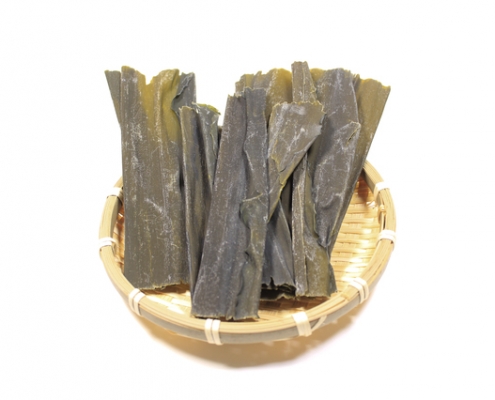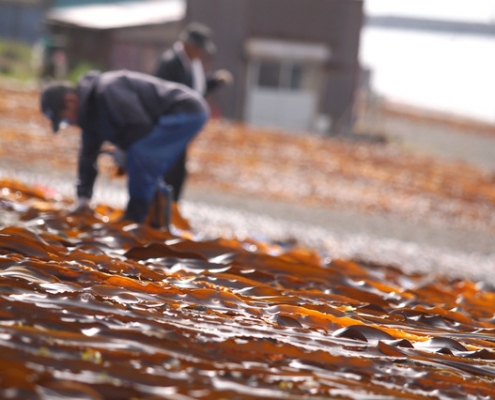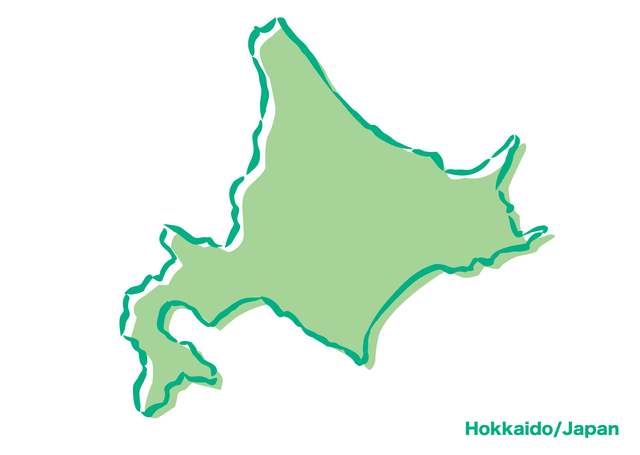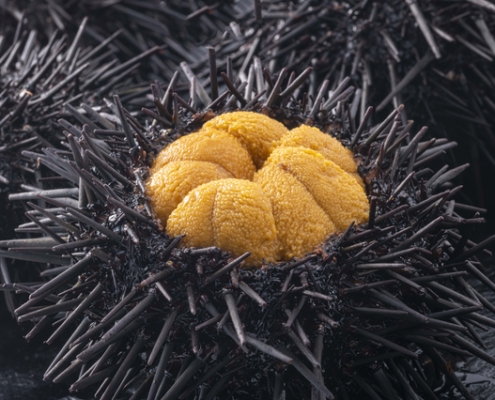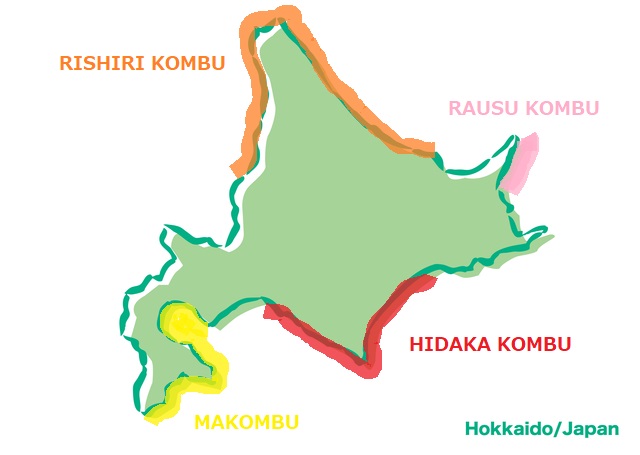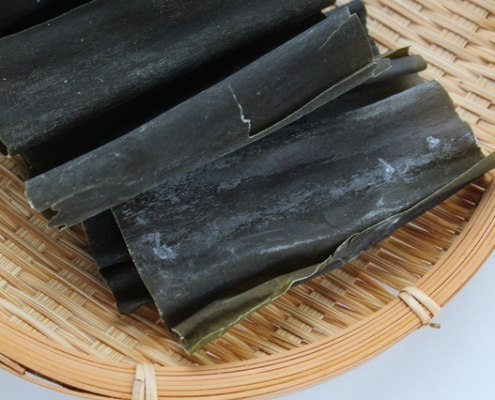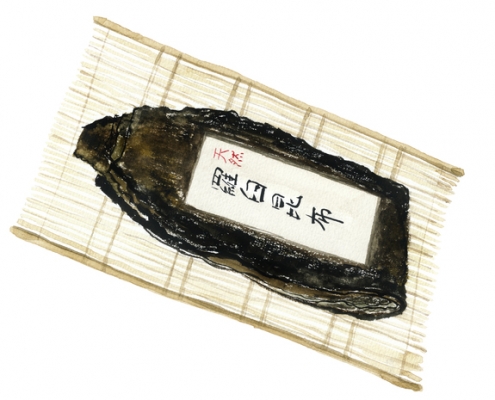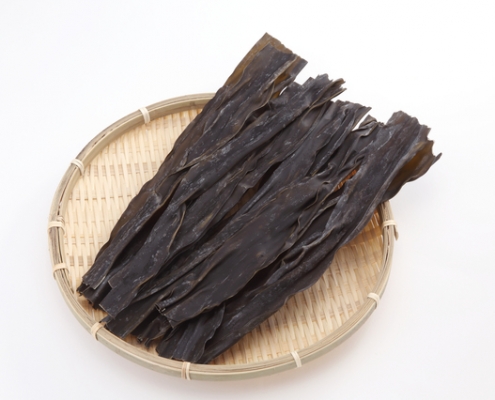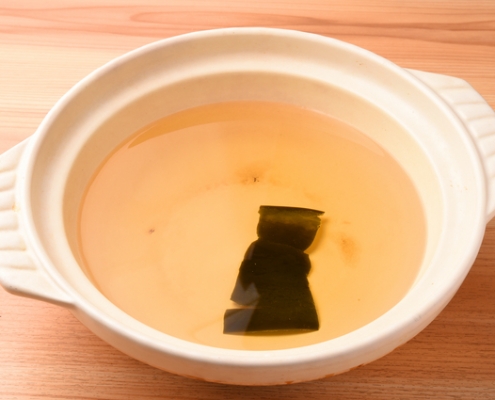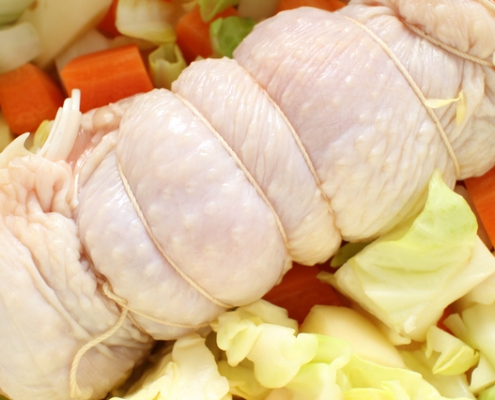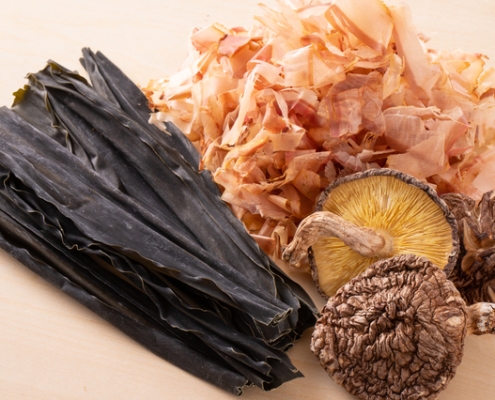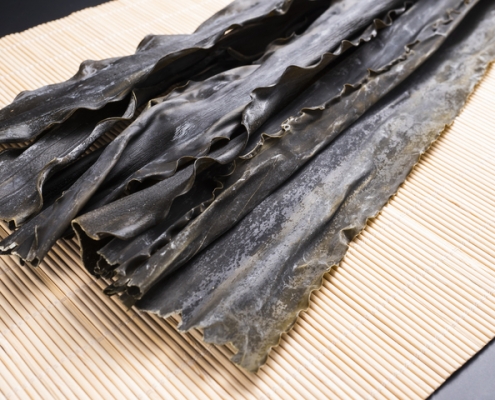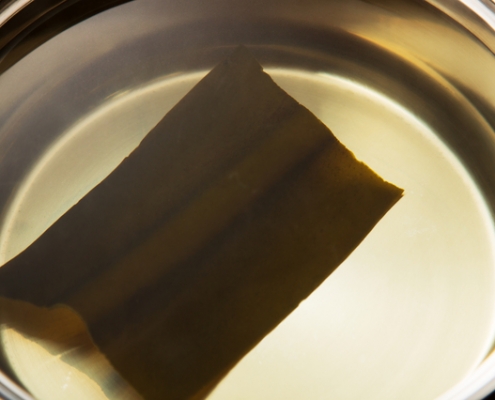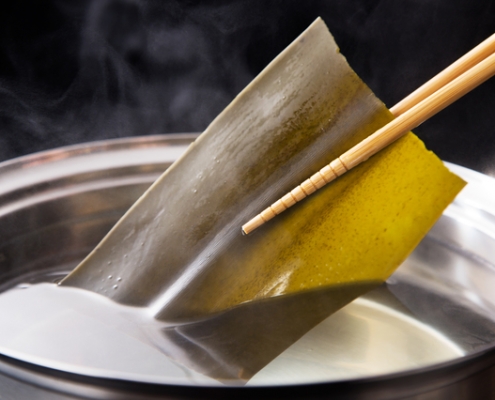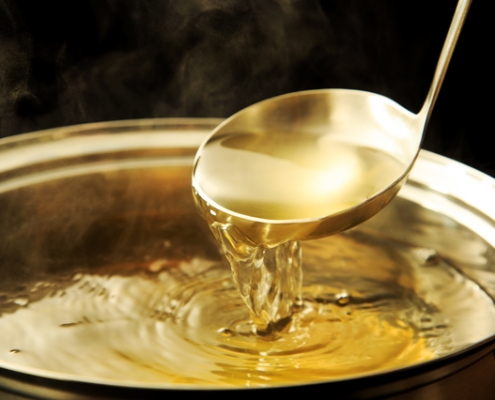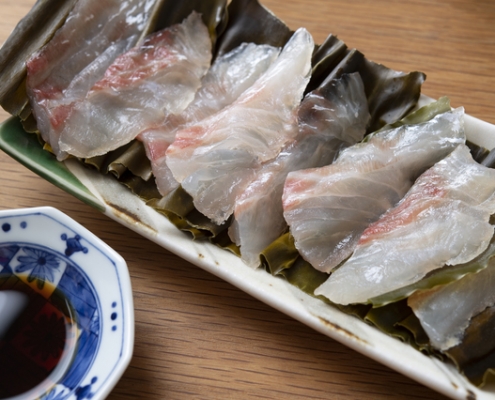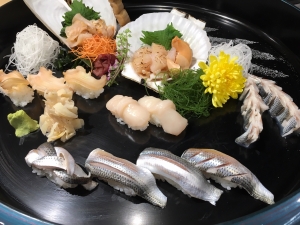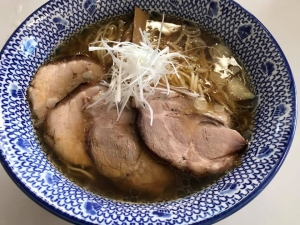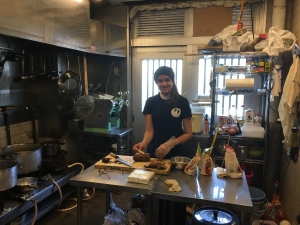Learn the Basics of Cooking with Kombu Kelp
July 21st 2021 Updated
This article focuses on Japanese Kombu, which has been attracting in recent years as a natural ingredient that adds umami to both Japanese and Western cuisine.
Contents
- 1 What is Kombu?
- 2 Why is Hokkaido Kombu so Famous?
- 3 Good Quality Sea Urchin is Made From Good Quality Kombu!
- 4 Famous Types of Kombu in Hokkaido
- 5 What is Kombu Dashi?
- 6 How to Make Dashi?
- 7 What is the Umami Found in Kombu?
- 8 Reasons Why Kombu is in the Spotlight Now
- 9 Kobujime
- 10 Where Can I Buy Kombu Kelp?
What is Kombu?
Kombu is a type of seaweed that grows by photosynthesis at a depth of 5-7meter in the ocean. Size can range from approximately 2meter up to 10m in length in larger varieties, and over 60cm in width.
In Japan, the harvesting season is from mid-July to mid-September. Harvesting occurs only on sunny days when it’s possible to dry the kombu in a single day. The harvested kombu is brought to a drying ground covered with pebbles and spread to dry.
Why is Hokkaido Kombu so Famous?
Kombu thrives in cold waters and has a limited habitat. Besides Japan, China, South Korea, France, the United States, Canada, etc. are all major producers of edible kombu.
Globally, Hokkaido is known as a treasure trove of high-quality Kombu and produces over 90% of the kombu in Japan.
Good Quality Sea Urchin is Made From Good Quality Kombu!
Hokkaido is also famous for its sea urchin and there is a strong link between sea urchin and kombu.
It is said that sea urchin that feeds on high-quality kombu will develop a complex flavor with no unpleasant tastes.
Famous Types of Kombu in Hokkaido
Almost all Japanese kombu is produced in Hokkaido, but there are different names and brands depending on the region.
Four of the most famous types of kombu are: Makombu (Yamadashi), Rishiri Kombu, Rausu Kombu and Hidaka Kombu (Mitsuishi).
Makombu 真昆布
Produced in southern Hokkaido, Makombu is reputedly the finest quality kombu. It has a sophisticated sweetness and mild taste and makes top quality dashi (soup stock).
Makombu broth is especially popular in the Kansai region, such as in Kyoto and Osaka.
Rausu Kombu
Also known as Oni Kombu, Rausu is a high-quality kombu like Makombu but it’s found in Northern Hokkaido.
It’s full of flavor and smells amazing. It’s a popular dashi kombu in Tokyo and the Kanto region. The broth develops a slight yellowish color.
Rishiri Kombu
It’s also top quality kombu, after Makombu and Rausu. It makes a clear refined broth, with great flavor. It’s known for its slightly salty taste and dark color.
Hidaka Kombu
It smells more like the ocean than usual kombu and has a faint sweetness.
What is Kombu Dashi?
Probably the most well-known way to use kombu is in soup.
Dashi is a liquid with umami flavors extracted from natural ingredients. Japanese dashi is equivalent to soup stock in Western cuisine and tāng soup stock in Chinese cuisine.
In Japanese cooking, soup stock is mainly made from simmered kombu or shiitake mushrooms, dried bonito flakes etc.
How to Make Dashi?
Follow these instructions to make dashi from kombu:
■ Ingredients
1.
Wipe the surface of the kombu with a damp well-wrung cloth. (Don’t wash it under water)
* The white powdery substance is an umami ingredient called mannitol. So be careful not to scrub it under water as you’ll lose that precious umami flavor.
2.
Soak the kombu in the above-mentioned amount of water for about 30 minutes.
3.
Set the heat to medium.
4.
Take out the kombu kelp just before it starts to boil and your dashi is done.
* Take out the kombu kelp when you start to see small bubbles appearing at the bottom of the pot. Be careful not to overcook, otherwise the sticky substance of the kombu will start to dissolve and it will ruin the flavor.
What is the Umami Found in Kombu?
Umami is a delicious flavor and one of the five basic tastes, along with sweet, sour, salty and bitter. In addition to glutamic acid, which is an amino acid, umami flavors also include inosinic acid, which is found in meat and fish and guanylic acid, abundant in mushrooms.
The synergistic effect of combining these compounds results in a stronger umami flavor.
In Japanese cuisine for example, dashi is made with glutamic acid from kombu and inosinic acid from bonito.
In Western food, soup stock is made with glutamic acid found in celery, carrot, onion and tomato and inosinic acid contained in beef, chicken and fish.
Reasons Why Kombu is in the Spotlight Now
It’s possible to add umami flavors by including MSG (Mono-sodium Glutamate). However, an increasing number of consumers prefer food without artificial ingredients, which is why kombu is attracting so much attention recently.
It’s fast becoming popular as an ingredient that can add umami flavors without using artificial ingredients, not only in Japanese cuisine but Western cuisine, too.
Another reason is its value as a plant-based ingredient. As the vegan market expands, kombu is becoming a much-prized ingredient to draw out or add umami flavors, without using animal products.
Kobujime
Apart from dashi soup, kombu is often used for Kobujime. This method, often made with white fish, such as sea bream, flounder, sea bass, etc., cures the fish between layers of kombu, infusing it with umami.
The kombu draws out excess moisture from the fish while also infusing it with umami. The inosinic acid contained in the fish and the glutamic acid of the kombu creates an exquisite kobujime flavor combination.
Where Can I Buy Kombu Kelp?
While it may depend on the area, Japanese kombu for making dashi or kobujime can generally be purchased at major Japanese food suppliers in most Asian countries, Europe and North America.
To know more about Japanese food companies in your country/area, be sure to check out from here.
What would you like to know more?

Culinary Schools in Japan
Tokyo Sushi Academy
The first and the most popular sushi school in the world.
Japan Culinary Institute
Japanese culinary training including sushi, kaiseki, yakitori, wagashi and more.
Miyajima Ramen School
More than 1,000 graduates from over 50 countries.
International Ramen School
Ramen study program combined with OJT

